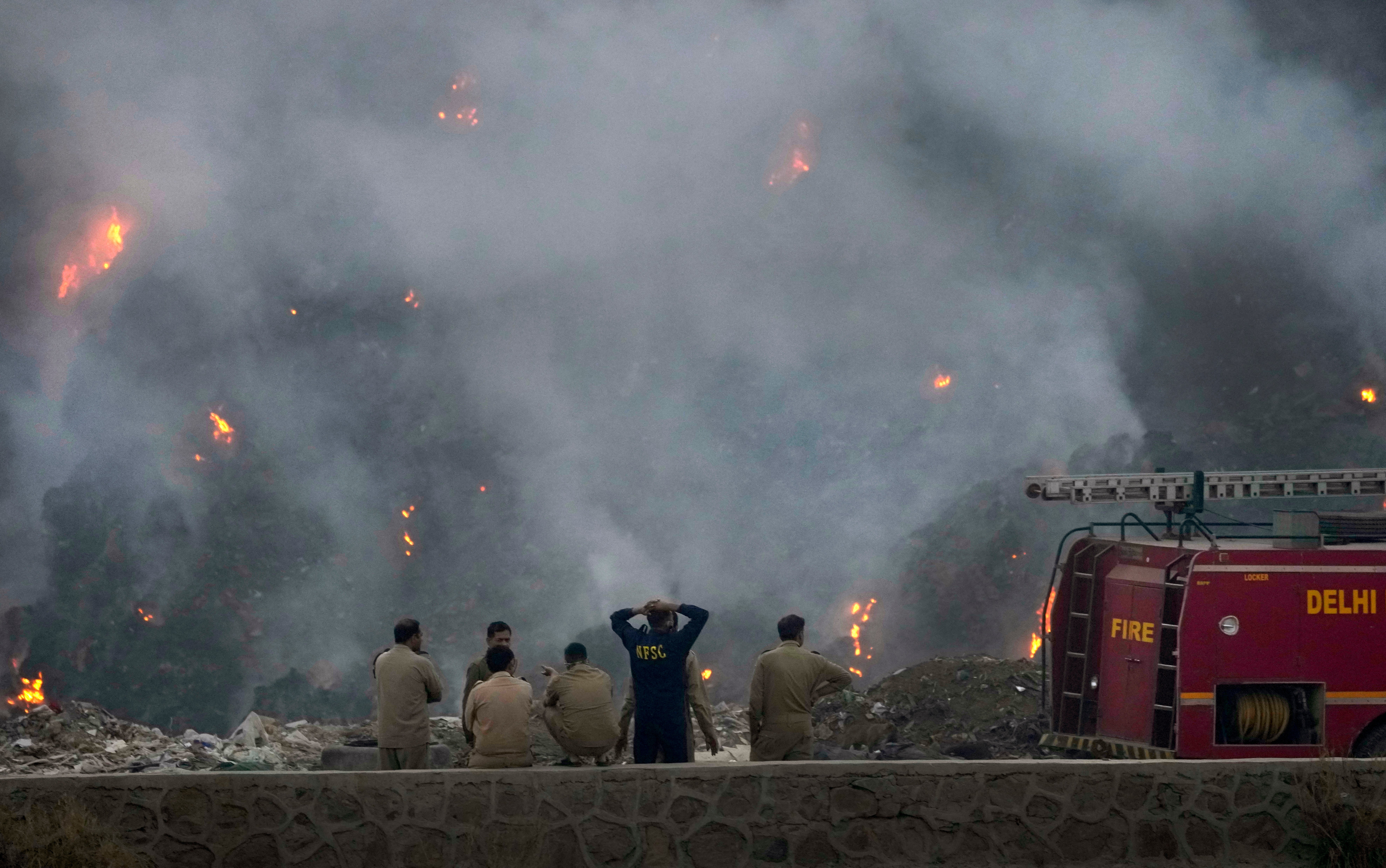Massive landfill on fire in Delhi as India and Pakistan hit by deadly heatwave
Temperatures rise above 40C in the Indian capital and are set to get hotter

With temperatures reaching 42C in Delhi, residents woke to the news on Wednesday that a major fire had engulfed one of the capital’s mountainous rubbish dumps, sending thick black smoke across the city.
The fire at the sprawling Bhalswa site to the north of the capital — one of three mega-landfills servicing the city— began on Tuesday, creating hazardous conditions for workers who had begun the dangerous process of salvaging garbage from the fire.
Fire engines rushed to the site and have been battling the blaze at the landfill since, Atul Garg, the director of Delhi Fire Services, told The Independent.
A dumping site for 2,300 tonnes of the city’s daily waste, the Bhalswa landfill is taller than a 17-story building and covers an area bigger than 50 football fields.
“There are a lot of challenges to fight a fire, especially in the landfill,” explained Mr Garg. “This is a large area and there is no road. So, no water tanker can go to the spot. There is no water available nearby that you can use as a source to douse the fire.
“Secondly, since the soil is loose, there are chances that one might just sink in it. So, you cannot work through the night to douse the flame.”
Fires at this landfill are not unknown, say locals. “There’s a fire every year. It is not new. There is a risk to life and livelihood, but what do we do?” Bhairo Raj, 31, a waste worker living near the landfill told the Associated Press.
But the fires do appear to be happening with greater regularity. The capital city – which like the rest of India saw the hottest March in over a century – has reported four major incidents in the last month alone.
The first major fire of the year broke out in Ghazipur on 28 March. It continued to burn for three days with dark fumes blanketing the nearby area of east Delhi and neighbouring districts of Uttar Pradesh. The Delhi Fire Services reported two more blazes at the site on 10 April and 20 April.
The organic waste decaying in the land results in the release of highly combustible methane gas, explains Aarti Khosla, the director of Climate Trends, an NGO working on environmental issues. As the temperature rises, so does the amount of methane gas generated, which can spontaneously ignite, she told The Independent.
“It is a natural process and has happened before. But because right now the temperatures are very high in Delhi, yesterday’s accident was precipitated by that. So, you can make the link between how things are happening on climate change, extreme weather, heat stress and landfill burning, and of course poor waste management.”

While the authorities are yet to pinpoint the cause of the current blaze, a Delhi Fire Services official told The Independent that treatment of waste is the only solution to prevent these fires.
“The corporation should dump an inert layer of sand and construction waste after every layer of freshly dumped waste. Such layers act as barriers against the fire,” said the official, who was speaking on condition of anonymity.
A deadly heatwave has been building across India and Pakistan, with temperatures forecast to reach up to 45C in Delhi.
“The recent high temperatures in India were made more likely by climate change,” said Dr Mariam Zachariah, research associate at the Grantham Institute, Imperial College London.
“Before human activities increased global temperatures, we would have seen the heat that hit India earlier this month around once in 50 years. But now it is a much more common event we can expect such high temperatures about once in every four years. And until net emissions are halted, it will continue to become even more common.”





Join our commenting forum
Join thought-provoking conversations, follow other Independent readers and see their replies
Comments